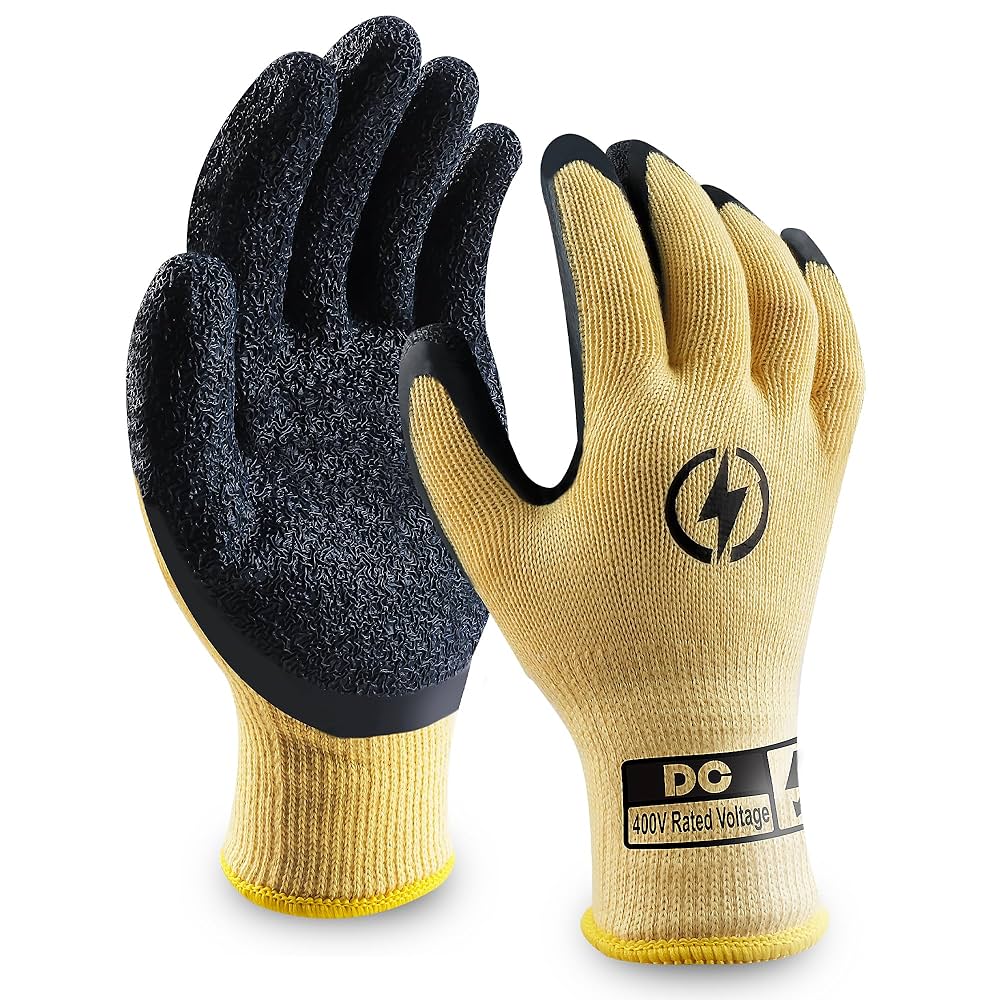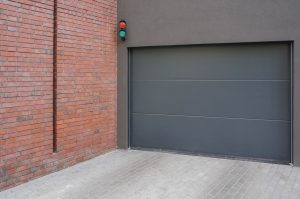Why do electricians wear 7 gloves? It might sound extreme at first, but there’s a smart and critical reason behind this layered protection method.
Electricians often work in high-risk environments where one mistake could mean serious injury—or worse. Wearing multiple layers of gloves isn’t just about safety—it’s about following strict electrical safety standards and ensuring maximum protection. If you think gloves are just for keeping hands clean, think again.
Keep reading to discover the science, safety standards, and smart practices behind why electricians wear 7 gloves—and how it could change the way you think about protection on the jo

Credit: www.amazon.com
Purpose Of Multiple Gloves
Electricians wear multiple gloves to ensure maximum safety during their work. Each glove adds a layer of protection against electrical hazards. Wearing seven gloves might seem excessive but it plays a crucial role in shielding electricians from severe injuries. The purpose of multiple gloves is to combine insulation and durability for effective defense.
Enhanced Electrical Insulation
Each glove provides a specific level of electrical insulation. By stacking gloves, the total insulation increases significantly. This reduces the chance of electric current passing through to the skin. The gloves are made from materials that resist electrical flow, such as rubber. More layers mean better protection against high voltage shocks.
Layered Protection Benefits
Multiple gloves protect against mechanical damage like cuts and abrasions. Outer gloves are usually tougher to handle tools and sharp edges. Inner gloves focus on electrical insulation and comfort. Layering helps maintain flexibility while ensuring safety. It also allows electricians to replace outer gloves if damaged without removing all protection.
Preventing Electrical Shocks
Seven gloves create a strong barrier against electric shocks. If one glove fails, others still provide protection. This redundancy lowers the risk of severe injury or death. The gloves also prevent accidental contact with live wires. Wearing them is a key safety practice in electrical work.

Credit: www.envirosafetyproducts.com
Types Of Gloves Used
Electricians rely on different types of gloves to keep themselves safe from electrical hazards. Each pair serves a specific purpose, working together to provide maximum protection. Understanding the types of gloves used can help you appreciate why wearing seven gloves isn’t just a tradition but a safety necessity.
Rubber Insulating Gloves
Rubber insulating gloves are the main barrier against electric shocks. They are designed to prevent electricity from passing through to the skin. These gloves come in various classes, each rated for different voltage levels, so electricians choose the right one for the job.
Because rubber can be easily damaged, these gloves are often tested before use to ensure no cracks or holes exist. Would you trust your safety to gloves without checking them first? This step is crucial to avoid unexpected accidents on the job.
Leather Protective Gloves
Leather gloves are worn over the rubber insulating gloves to add mechanical protection. They guard against cuts, abrasions, and punctures that could damage the rubber gloves underneath. This outer layer helps maintain the integrity of the insulating gloves during tough physical work.
Imagine working on rough surfaces or handling sharp tools without this extra layer. Your rubber gloves could tear, exposing you to dangerous electrical currents. Leather gloves extend the life and safety of the crucial insulating gloves beneath.
Cotton Inner Gloves
Cotton inner gloves are worn underneath the rubber gloves for comfort and sweat absorption. They prevent the rubber gloves from sticking to your skin, which can be uncomfortable during long hours. These gloves also help keep your hands dry, reducing the risk of slipping.
Have you ever worn gloves that made your hands sweat and feel sticky? Cotton inner gloves solve that problem, making it easier to stay focused and safe. They might seem simple but play a vital role in an electrician’s glove system.
Safety Standards And Regulations
Electricians often face hazardous working conditions, from high-voltage currents to sharp tools. To ensure their safety, strict standards and regulations govern the protective gear they use, including gloves. These guidelines are not just recommendations—they’re critical measures that save lives and prevent injuries every day.
Industry Safety Guidelines
The electrical industry follows rigorous safety guidelines designed to minimize risks. Organizations like OSHA (Occupational Safety and Health Administration) and NFPA (National Fire Protection Association) set clear expectations for the use of personal protective equipment (PPE), including gloves.
These guidelines emphasize the importance of insulating gloves to protect electricians from electrical shock. For instance, OSHA mandates that workers exposed to 50 volts or more must wear insulated gloves rated for the voltage level they may encounter. This ensures that no matter the task, electricians are equipped with the right layer of protection.
Glove Testing And Certification
Not all gloves are created equal. Insulated gloves undergo stringent testing to meet certification standards before they are deemed safe for electrical work. These tests check for factors like dielectric strength, physical durability, and resistance to punctures.
Gloves are categorized by “class” based on the voltage they can withstand. For example, Class 0 gloves are rated for up to 1,000 volts, while Class 4 gloves can handle up to 36,000 volts. Each pair comes with a label indicating its class and testing date, giving electricians confidence in their gear.
To maintain effectiveness, gloves must be re-tested regularly. Did you know that many electricians send their gloves for testing every six months? This ensures that even wear and tear won’t compromise safety.
Compliance Requirements
Regulations don’t just focus on the gloves themselves but also on how electricians use and maintain them. Compliance requires workers to inspect their gloves for cracks, punctures, or other damage before every use. A small tear could lead to a life-threatening situation.
Employers are also responsible for providing appropriate training. Electricians must understand how to select the correct gloves for their tasks, store them properly, and replace them when necessary. This proactive approach ensures compliance and reduces risks.
Are you aware of how these safety measures impact the broader industry? Adherence to these regulations not only protects individuals but also fosters a culture of accountability. When everyone follows the rules, the entire workplace becomes safer for everyone involved.
Glove Maintenance And Care
Keeping electrician gloves in top condition is crucial for safety and performance. Proper maintenance and care extend the gloves’ lifespan and ensure they provide the protection you need on every job. Neglecting this can put you at risk of electrical hazards and costly replacements.
Inspection Before Use
Before putting on your gloves, take a close look at them. Check for any cracks, holes, or signs of wear that might reduce their effectiveness. Even a tiny tear can allow electricity to pass through, putting you in danger.
Feel the gloves carefully and stretch them slightly to spot weaknesses that aren’t visible at first glance. If you find any damage, don’t take a chance—replace the gloves immediately. Have you ever skipped this step and regretted it later?
Proper Storage Techniques
How you store your gloves affects their durability. Keep them in a cool, dry place away from sunlight and chemicals that can degrade the material. Avoid folding or crushing them, as this can cause cracks over time.
Use a dedicated glove bag or container to prevent dirt and moisture buildup. Storing gloves properly means they’ll be ready and safe when you need them most.
Replacing Damaged Gloves
Knowing when to replace your gloves is just as important as caring for them. Don’t wait for visible damage to appear—replace gloves if they are old or have been exposed to harsh conditions. Age and exposure weaken the material, even if you can’t see it.
Always have spare gloves on hand so you can swap them out quickly. Safety isn’t worth risking over worn-out gear. When was the last time you checked the condition of your spare gloves?
Common Misconceptions
Many people misunderstand why electricians wear multiple layers of gloves. Some believe it is only for extra comfort or general protection. Others think any thick material can work just as well. These assumptions can lead to unsafe practices. Understanding the actual reasons helps highlight the importance of proper safety gear.
Why One Glove Isn’t Enough
One glove cannot provide sufficient protection against high-voltage electricity. Electricians often wear a combination of insulating and leather gloves. The inner glove provides electrical resistance, while the outer one prevents tears or punctures. This dual-layer system ensures safety during hazardous tasks.
Myths About Glove Thickness
Many assume thicker gloves always mean better protection. This is not true. The material and design of the glove matter more than its thickness. Electricians use gloves designed specifically to handle electrical currents. These gloves are tested for their insulating properties, not just their thickness.
Gloves Vs. Other Protective Gear
Some believe gloves alone are enough to stay safe. While gloves are essential, they are only part of the safety equipment. Electricians also use insulated tools, protective clothing, and face shields. Each item serves a unique purpose in reducing risks. Gloves focus on hand protection, while other gear shields the rest of the body.
Real-world Examples
Real-world cases clearly show why electricians wear seven gloves. These examples highlight the dangers in electrical work and the role gloves play in safety. Each story teaches important lessons on injury prevention and proper gear use.
Case Studies Of Electrical Accidents
In one incident, an electrician touched a live wire by mistake. Without gloves, the shock caused severe burns and long hospital stays. Another case involved a short circuit, where gloves helped reduce injury severity. These accidents prove the high risks electricians face daily.
How Gloves Prevented Injuries
Gloves act as a barrier against electric shocks and burns. In several incidents, electricians survived because the gloves blocked current flow. They also protect hands from cuts and abrasions caused by sharp tools. Wearing seven gloves adds extra layers of safety, reducing injury chances.
Lessons From Industry Experts
Experts stress the importance of proper glove use. They recommend regular checks for holes or damage. Training on correct glove wearing can save lives. Professionals agree that layering gloves offers better protection than a single pair. Safety standards often require multiple gloves for high-voltage tasks.

Credit: www.amazon.com
Frequently Asked Questions
Why Do Electricians Wear Gloves While Working?
Electricians wear gloves to protect themselves from electric shocks, burns, and injuries. Insulated gloves prevent direct contact with live wires.
Are 7 Gloves Necessary For All Electrical Work?
Not all tasks require 7 gloves. They are used for high-risk jobs involving elevated voltage or hazardous electrical environments.
What Type Of Gloves Do Electricians Use?
Electricians use insulated gloves made of rubber, leather, or composite materials. These gloves ensure safety and meet electrical standards.
How Do Gloves Protect Against Electric Shocks?
Insulated gloves block electricity, creating a barrier between the electrician’s hands and live electrical currents, preventing shocks.
Conclusion
Electricians wear seven gloves for safety and protection. Each glove layer helps stop electric shocks and cuts. These gloves keep hands safe from injury and harm. Wearing multiple gloves also improves grip on tools. Safety is the main reason for this practice.
Understanding this helps you respect the work electricians do. It shows how careful they must be every day. Safety gear like gloves matters a lot in their job. This simple act helps prevent accidents and saves lives.








